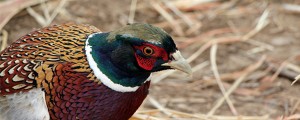House Subcommittee Votes to Curtail Environmental Protections
By Fred Hoefner
National Sustainable Agriculture Coalition
On Wednesday, July 9, the House Interior and Environment Appropriations Subcommittee passed a bill to fund the U.S. Environmental Protection Agency (EPA), U.S. Department of the Interior (DOI), and related agencies in fiscal year (FY) 2015, which begins on October 1, 2014. The bill cuts EPA funding by $717 million, or 9 percent, relative to current already tight spending levels. Funding for the National Park Service and U.S. Fish and Wildlife Service within DOI remained largely intact. Most strikingly, the bill contains 35 separate policy riders aimed at curtailing the Obama Administration’s implementation of key environmental protections.
The multitude of legislative riders attached to various FY 2015 appropriations bills in the House–including two riders to the agriculture appropriations bill, one intended to waive school nutrition standards, and another aimed at undermining the U.S. Department of Agriculture’s effort to protect livestock farmers from abusive and deceptive practices by meatpacking corporations–are a big part of the reason that Congress is struggling to pass appropriations bills before the end of the fiscal year. The policy riders are topics within the jurisdiction of congressional authorizing committees, not the appropriations committees, but given their annual nature, appropriations bills become ripe targets for legislating in addition to determining funding levels.
Among the riders included in the Interior-Environment bill are provisions to:
▪ Prevent EPA from implementing new greenhouse gas emissions restrictions for power plants;
▪ Remove EPA’s existing authority to regulate carbon pollution from large stationary facilities;
▪ Prohibit the Administration from designating coal ash as a hazardous waste;
▪ Bar the U.S. Fish and Wildlife Service from creating or expanding wildlife refuges; and
▪ Prohibit the listing two species of sage grouse as endangered.
The bill also contains a rider to halt EPA from finalizing its Proposed Rule to clarify the jurisdictional scope of the Clean Water Act (CWA). In issuing the Proposed Rule, EPA took an important and overdue step toward ensuring the protection of our nation’s wetlands, streams, and other waters. The CWA is the nation’s primary tool for protecting wetlands that are connected in some way to other bodies of water, such as rivers or streams; however, the scope of the CWA had been muddied by earlier court rulings.
Were the House and Senate to pass their respective appropriations bills, it is very unlikely that the riders would survive negotiations over the makeup of the final legislation. In recent years, the House Majority has loaded up appropriations bills with policy riders to have more leverage in calling for spending cuts when negotiating with the Senate, and getting perhaps a few of the riders through the process as well. Unfortunately, what this means is that, in a year when both chambers of Congress were able to agree upon overall spending levels, Congress will nonetheless very likely get so bogged down by policy riders that it cannot get its work done in passing FY 2015 appropriations bills.
As the number of legislative days left before the November elections slip by, it will become extremely difficult for Congress to finalize appropriations bills, or some package of appropriations bills, prior to recessing for the month of October to go home and campaign. It is still possible though, and we strongly encourage Congress to get the job done and done on time. The far worse, but more likely, alternative is that Congress will simply continue current funding levels on autopilot under what is known as a “continuing resolution,” at least for part of the next fiscal year.
Read our earlier blog post for more information on the status of FY 2015 appropriations.

